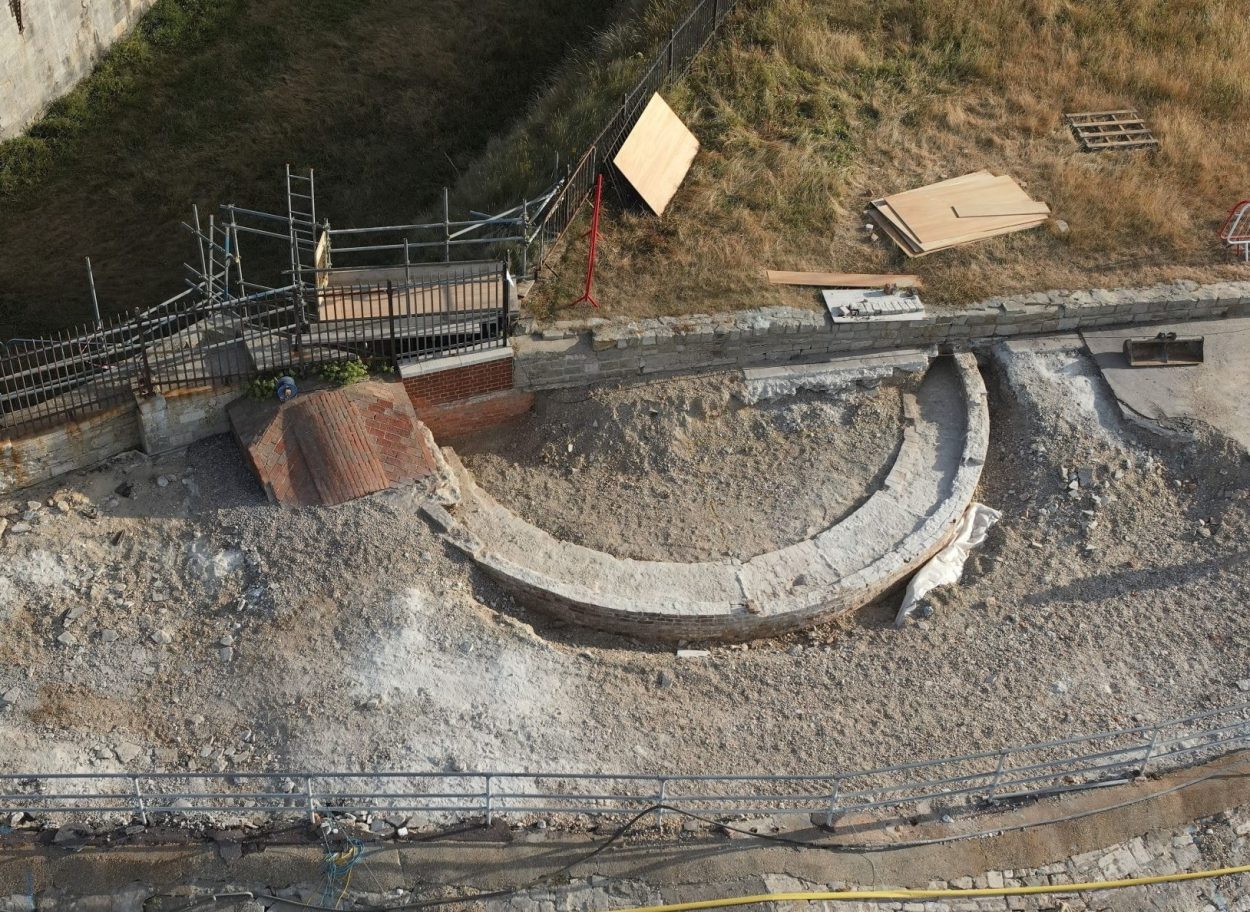AN EARLY 19TH CENTURY SWIVEL GUN MOUNT HAS BEEN UNCOVERED DURING EXCAVATION WORKS FOR THE PORTSMOUTH SOUTHSEA COASTAL SCHEME FLOOD DEFENCE PROJECT.
The discovery was made at Southsea Castle, an artillery fort originally constructed by Henry VIII on Portsea Island in Hampshire, England.
The castle was built to defend the royal naval base at Portsmouth, which was part of Henry VIII’s De-vice programme to protect the coast against invasion from France and the Holy Roman Empire.
The castle was expanded in the 1680s by Sir Bernard de Gomme and, after a period of neglect in the 18th century, was redesigned again in 1814 under the direction of Major-General Benjamin Fisher during the Napoleonic Wars.

In 1844, Southsea Castle and Fort Clarence were converted into military prisons to reduce the pressure on the civilian gaols (jails), but Southsea Castle returned to active military use by 1850.
With the outbreak of WW1, the castle formed part of the “Fortress Portsmouth” plan for defending the Solent and was upgraded with new gun mounts and a QF 3-inch 20 cwt (10.9 cm 50.8 kg) anti-aircraft gun to prevent Zeppelin raids on the harbour.
The castle was involved in an armed stand-off with French naval vessels during WW2 after the fall of France in 1940. Ships from the French navy were anchored in the Portsmouth harbour, but fears rose that the warships might return to France and fall in German hands. To prevent their departure, the castle was ordered to be ready to fire on the fleet, leading to an armed stand-off with the French destroyer Léopard.

Excavations for the Southsea Coastal Scheme flood defence project discovered the remains of early 19th century swivel gun mount, which have been working with archaeologists from Wessex Archaeology, in collaboration with Historic England.
Archaeologists also found a large triangular defence structure near the gun emplacement, thought to be the remains of a revetment constructed as part of the late 17th century redesign of Southsea Castle.

Alex Godden from Wessex Archaeology said: “These well-preserved remains offer a fascinating in-sight into the development of Southsea Castle over the past 350 years. The triangular defence structure appears likely to be part of the redesign of the castle by the Dutch military engineer Bernard de Gomme.”
“It’s exciting, that as a result of the archaeological excavations we can see the physical evidence of the large scale upgrading of the historic defences of Portsmouth that took place in the late 17th century. In addition, the discovery of the 19th century swivel mount shows us how the defences have been adapted and continued to evolve over centuries,” added Godden.
Src: heritagedaily.com








